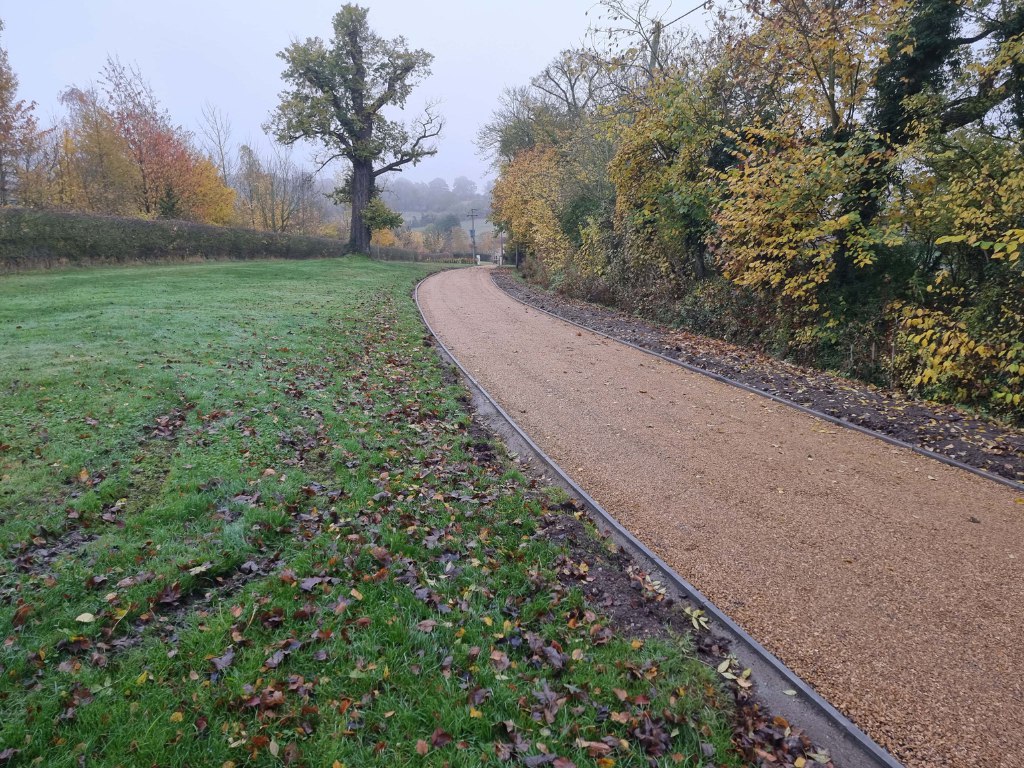Signs That Your Commercial Tarmac Surface Needs Resurfacing
A well-maintained tarmac surface plays an essential role in the appearance, safety, and functionality of any commercial property. Whether it’s a car park, access road, or forecourt, a smooth and durable surface gives the right impression to visitors and ensures vehicles and pedestrians can move safely. However, like all materials exposed to constant use and weather, tarmac will eventually begin to show signs of wear. Recognising these signs early can help prevent more serious damage and the need for full replacement later on. For property owners in Folkestone, Kent, Folkestone Driveways & Surfacing provides expert resurfacing solutions that restore performance, safety, and visual appeal.
The Importance of Regular Tarmac Maintenance
Commercial tarmac surfaces face continuous stress from heavy vehicles, changing weather conditions, and frequent use. Over time, small issues such as cracks or fading can evolve into more severe structural problems if not addressed. Regular inspections and timely resurfacing extend the life of your tarmac and ensure it continues to perform efficiently.
Tarmac resurfacing involves adding a new layer of asphalt over the existing base, giving the surface a fresh, even, and durable finish. Knowing when to resurface — rather than repair — is key to maintaining both safety and cost-effectiveness.
1. Visible Cracks and Potholes
Cracks are one of the first indicators that your tarmac surface may need attention. They can develop due to temperature fluctuations, water penetration, and the pressure of heavy vehicles.
- Small surface cracks can sometimes be repaired, but if they multiply or widen, they indicate deeper structural issues.
- Potholes often appear when water enters these cracks, freezes, and expands, breaking down the surface further.
Once potholes form, they can quickly worsen with traffic, creating safety hazards and damaging vehicles. If your commercial tarmac shows widespread cracking or pothole formation, resurfacing is likely the most effective solution.
2. Standing Water After Rain
A properly laid tarmac surface should allow water to drain efficiently. If puddles or pooling water remain after rain, it’s a clear sign of surface degradation. Standing water can accelerate damage by seeping into cracks, weakening the sub-base, and causing erosion beneath the surface.
Over time, poor drainage leads to more extensive cracking and unevenness. Resurfacing ensures the surface regains its proper slope and smoothness, restoring effective water flow and preventing long-term damage.
3. Fading or Discolouration
Tarmac naturally fades over time due to exposure to UV rays, rain, and vehicle wear. While fading alone may seem like a cosmetic issue, it often signals that the surface’s protective oils have broken down. This loss of flexibility makes the tarmac more brittle and susceptible to cracking and erosion.
A resurfacing project not only restores the dark, professional appearance of your tarmac but also reinstates the protective qualities that help it withstand future wear and weather conditions.
4. Uneven or Sunken Areas
If parts of your commercial tarmac surface appear sunken, uneven, or wavy, it suggests issues with the foundation beneath. This is often caused by poor drainage, sub-base failure, or excessive load-bearing pressure.
Uneven surfaces create potential trip hazards and water pooling issues, especially in areas with pedestrian access. When this occurs, resurfacing is often the best option, as it allows professionals to address the sub-base before applying a new, level layer of tarmac. Folkestone Driveways & Surfacing specialises in identifying the underlying causes of these problems to ensure the new surface is even, strong, and long-lasting.
5. Loose or Ravelled Aggregate
Tarmac is made from a mix of aggregate and bitumen, which bind together to form a durable surface. Over time, weather exposure and wear can cause the bitumen to degrade, leading to loose stones or a rough texture. This process, known as raveling, weakens the surface and reduces grip — a serious issue for high-traffic areas and vehicle turning zones.
If you notice loose aggregate or a rough texture across large areas, resurfacing will restore the smooth, cohesive finish your site needs for safety and appearance.
6. Frequent Repairs Becoming Necessary
If your tarmac surface requires constant patching or filling, it’s a sign that the damage is no longer isolated. While minor repairs can extend the life of a surface temporarily, they become less effective as wear spreads.
Resurfacing your commercial tarmac provides a more durable, cost-efficient long-term solution, eliminating the cycle of repeated repairs. It renews the structural integrity of the entire surface rather than addressing only individual problem areas.
7. Drainage Issues or Erosion Along Edges
The edges of a commercial tarmac surface are particularly vulnerable to damage, especially if they are exposed to heavy traffic or poor drainage. Over time, the edges can break away or crumble, allowing water to penetrate beneath the surface. This weakens the overall structure and can lead to further erosion or collapse.
Professional resurfacing reinforces these vulnerable areas and prevents future water damage, ensuring your tarmac remains stable and well-contained.
8. Safety and Visual Decline
Your commercial surface represents your business. A worn or uneven tarmac area not only looks unprofessional but also poses safety risks for vehicles and pedestrians. Faded markings, rough surfaces, and cracks can lead to accidents and create a negative impression of your premises.
A freshly resurfaced driveway, car park, or forecourt enhances both safety and presentation, giving clients and visitors confidence in the professionalism of your site. Folkestone Driveways & Surfacing ensures that every resurfacing project is completed to a high standard, combining visual appeal with superior functionality.
Why Resurfacing Is Better Than Frequent Repairs
Resurfacing is not just about restoring appearance — it rejuvenates the entire surface structure. It provides:
- A smoother, more durable finish.
- Enhanced safety for vehicles and pedestrians.
- Improved drainage and water resistance.
- Long-term performance and reduced maintenance needs.
By addressing deeper issues rather than surface symptoms, resurfacing ensures your commercial tarmac can withstand heavy use and changing weather conditions for years to come.
Why Choose Folkestone Driveways & Surfacing
As specialists in tarmac surfacing and resurfacing across Folkestone, Kent, Folkestone Driveways & Surfacing understands the demands of commercial environments. From car parks to access roads, our team delivers durable, professional finishes that stand up to continuous use. Every resurfacing project is completed using high-quality materials and proven installation techniques to ensure strength, longevity, and a polished appearance.
Conclusion
Recognising the signs that your commercial tarmac surface needs resurfacing can prevent costly damage and maintain the professional image of your business. Cracks, fading, pooling water, and uneven areas all indicate that your surface is past its best. For businesses in Folkestone, Kent, Folkestone Driveways & Surfacing offers expert resurfacing services designed to restore durability, enhance appearance, and provide a long-lasting solution for all types of commercial tarmac surfaces.
Call us on: 01303 763 895
Click here to find out more about Folkestone Driveways & Surfacing
Click here to complete our contact form and see how we can help with your driveway needs.

